It’s a little-known fact that back in 2015 Bill Gates actually predicted the pandemic of 2020. How? By using data, looking for precedent, overlaying his experience, and collaborating with experts. As leaders, we can do the same to predict whether our teams will succeed or fail.
As managers, we’re asked to predict the future every single day, and in this article, I’ll explain how we can don our magic goggles and work out whether our teams are going to be successful or not.
In 2015, someone predicted the pandemic and it wasn't just a bloke in the pub to his mate it was actually at a TED talk and it was Bill Gates.
What he said was that when he was growing up, the thing that everyone was most worried about, the biggest threat to humanity was a nuclear disaster. But that wasn't really the case anymore. The thing that we most need to be afraid of in the next few years was a virus.

If he were so inclined, he could probably feel a little bit smug about having called 2020.
Even if you set aside the extraordinary circumstances in which we found ourselves in the last 12 months, predicting the future is hard. And yet, it's something that we as managers of products, of people, of teams, and of businesses, are asked to do pretty much every single day.
- When is it going to happen?
- How long is it going to take?
- What's the outcome going to be?
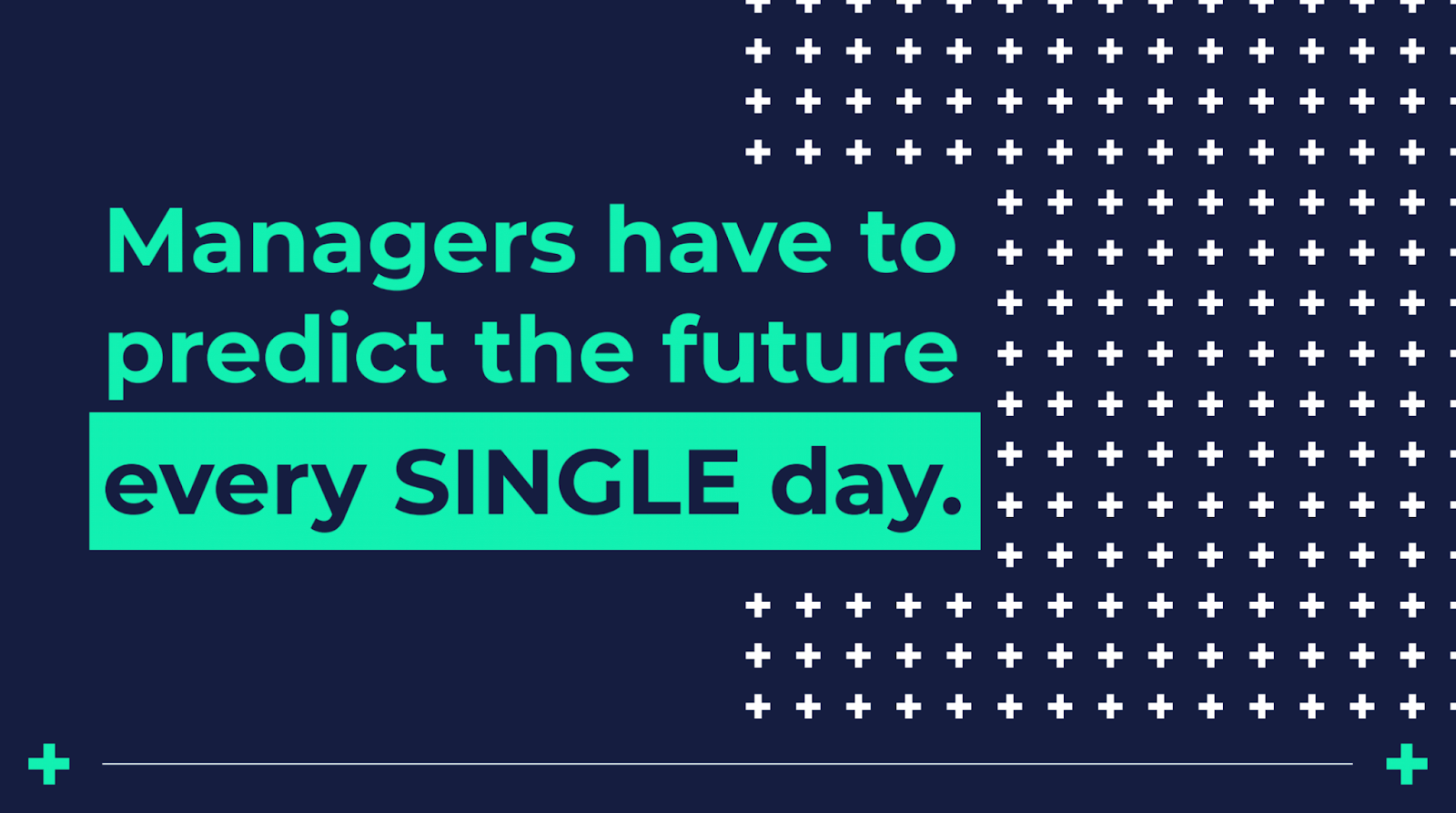
Bill Gates is a man who gets a lot of things right, does he have a pair of magic goggles that enable him to see into the future? He does not.
He uses data, he looks for precedent, and he overlays his experience and collaborates with experts. He stitches all of these things together to be able to deduce what the most likely outcome is.
For us to answer these types of questions that we get asked every day, the process is exactly the same, we need to do exactly the same thing. We need to take data and we need to understand the signs and signals we're seeing. Then we need to use our experience to determine what the most likely outcome is going to be.
That all sounds really simple, doesn't it? It's theoretically super simple. But when you try to do it, you start to realize the thing you're trying to predict is usually your team or the people in your team and how they're going to behave. That isn't as easy because people are not as predictable as pandemics.
The good news is that while we might not be able to predict exactly how our team members will behave, we can absolutely work out every single day, whether our teams are going to be successful or not. Once we know that, of course, we can intervene to help ensure that they're successful.
The same horizon
If you were going to make yourself a pair of magic goggles that allowed you to see into the future, the first lens that you would want on those goggles would be the ability to see whether you're all looking at the same horizon.
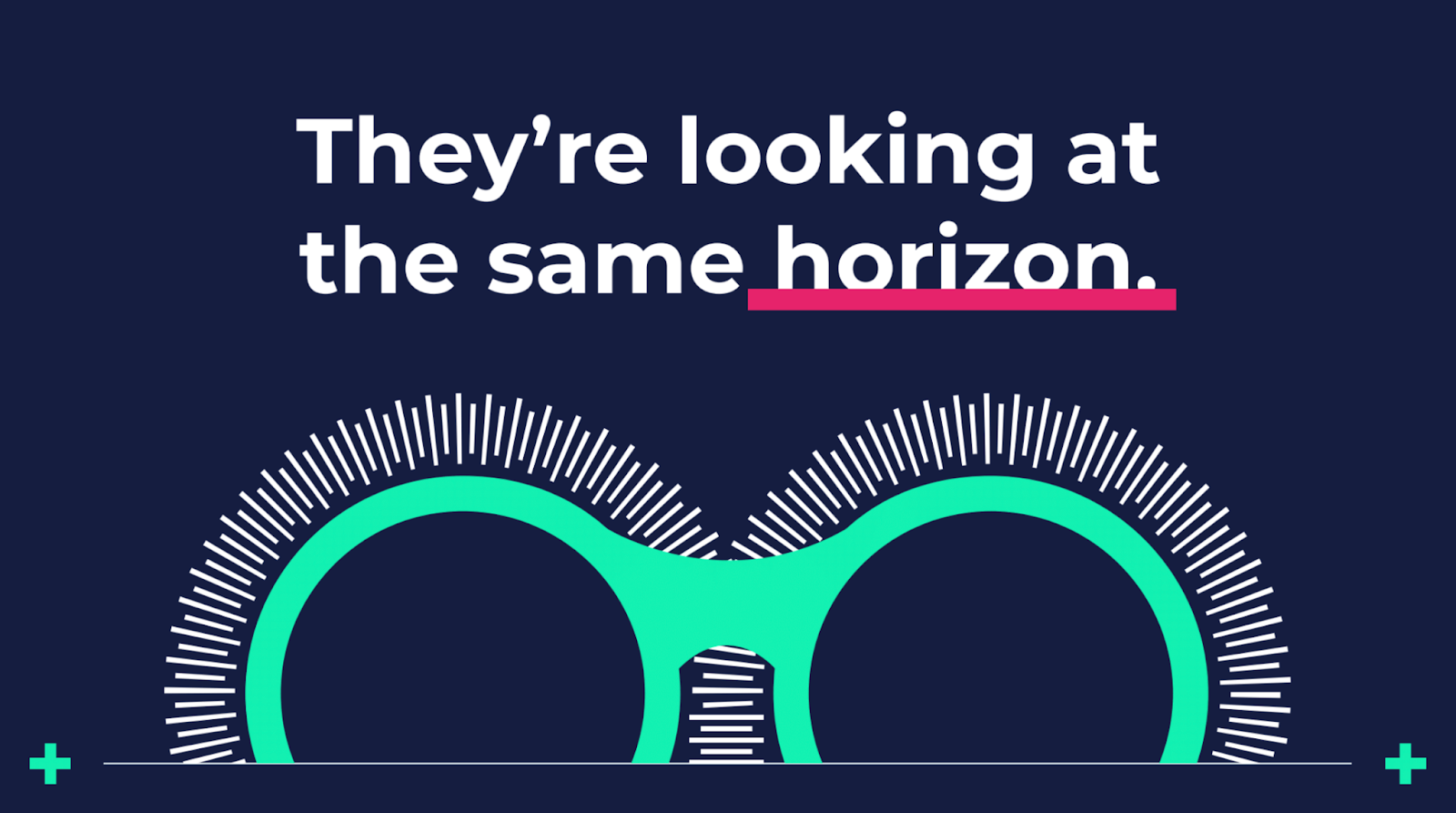
What do I mean by that?
A shared vision
I mean, do you have a shared vision of what success is, what it will look like when you get there? Does your team have that same vision?
A shared definition of success
To know whether your team is going to succeed or fail, you have to start with a shared definition of what success looks like.
An example: NowTV
In 2012, Sky launched NowTV and they needed to, they really needed to compete with Netflix. Initially, the idea of the proposition was low-cost, high-quality content - very much head to head with Netflix.
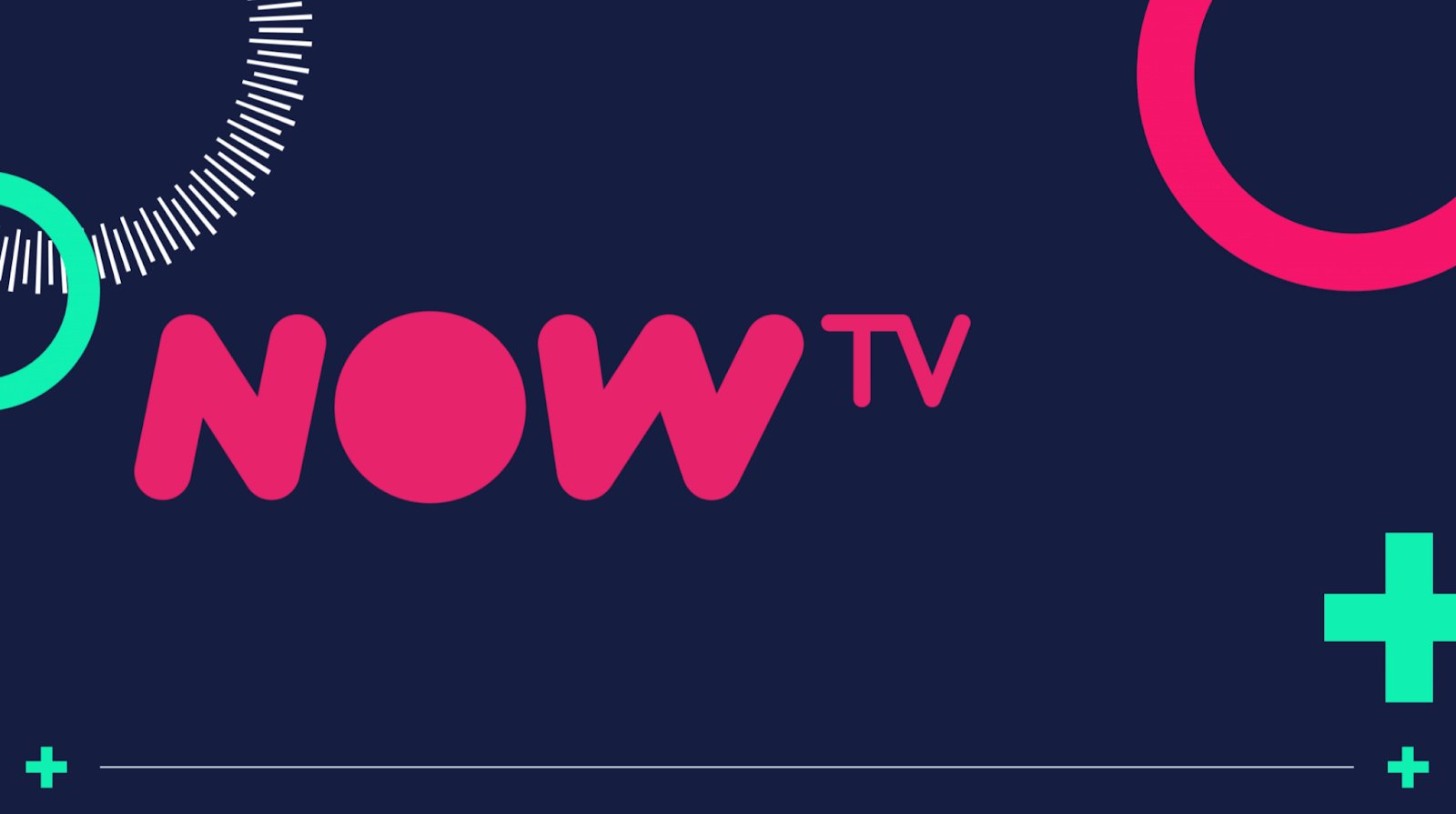
But then it very quickly became clear that people who had a Netflix account tended to also have a Sky account. They quickly realized if they didn't differentiate these propositions, they were going to be cannibalizing their own base, the main Sky subscription products.
They realized they had to differentiate the NowTV proposition, they had to look at it very differently. That for them started with a mission statement. Their mission statement was to make it easy to find the content you love. But a mission statement doesn't tell you where you're going - a vision does that.
Their vision which needed to deliver on that mission and then it informed every aspect of the product design, the proposition, the user experience, the branding, etc, was pay-lite or no contract commitment.
So the ability for a customer to cancel at any point, to appear, disappear, come in and come out as they like. The total opposite to the core, very sticky Sky subscription. That meant they could have two very different propositions alongside each other in the market and it also gave them a differentiator against some of their competitors.
That vision also helped them to launch new products and propositions as they went forward. In 2016 when they launched broadband, they asked themselves, how should NowTV do broadband? What does pay-lite look like for broadband? And of course, it was no contract broadband, a completely unique proposition at the time.
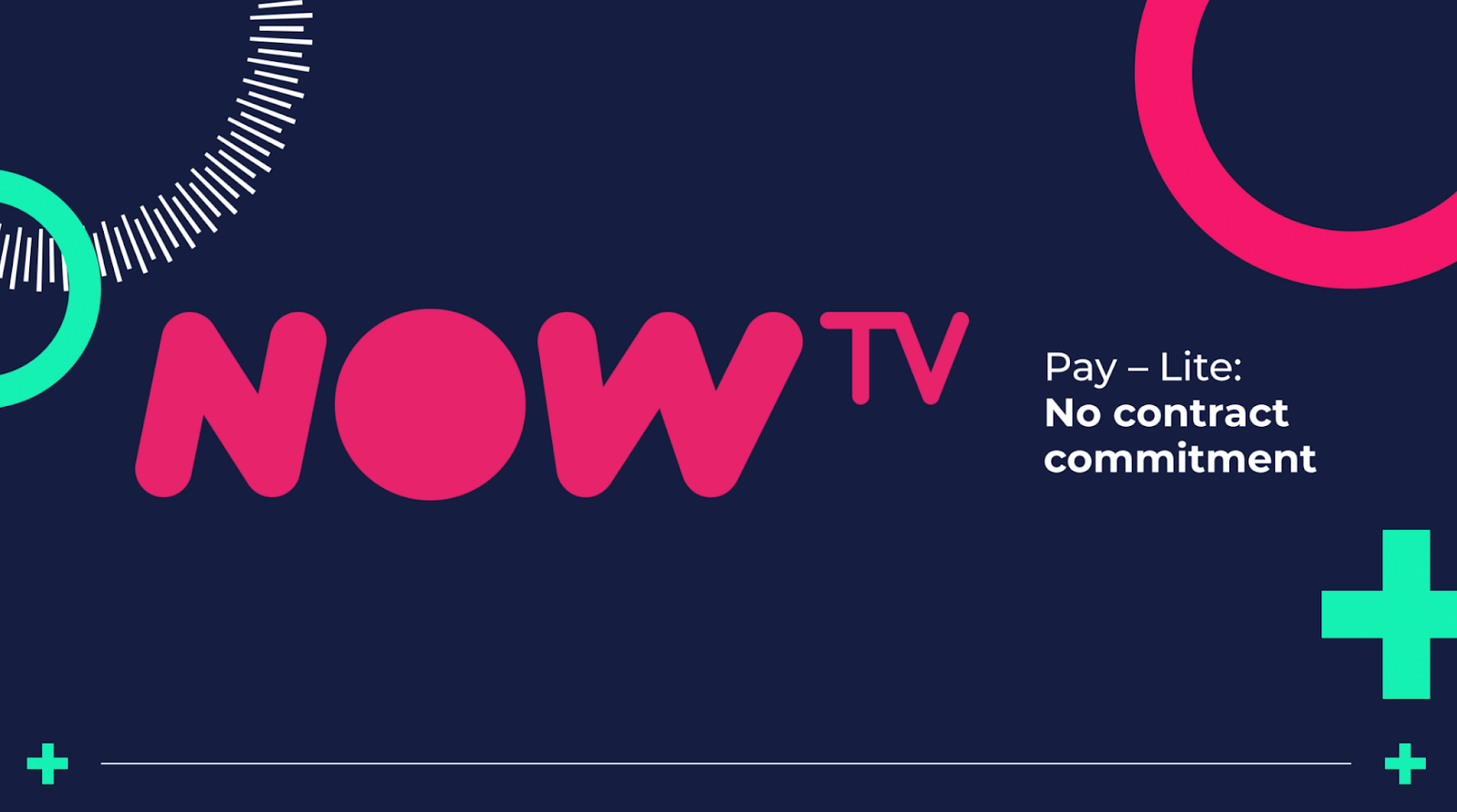
The clarity and consistency of that vision was one of the things that helped them to grow their user base by nearly 800% in five years.
How to get there
Having a vision is the first thing but you also need to be able to see that your team can see how to get there, they have to have a plan to get there. What's really important about that plan is that they need to have made it themselves.
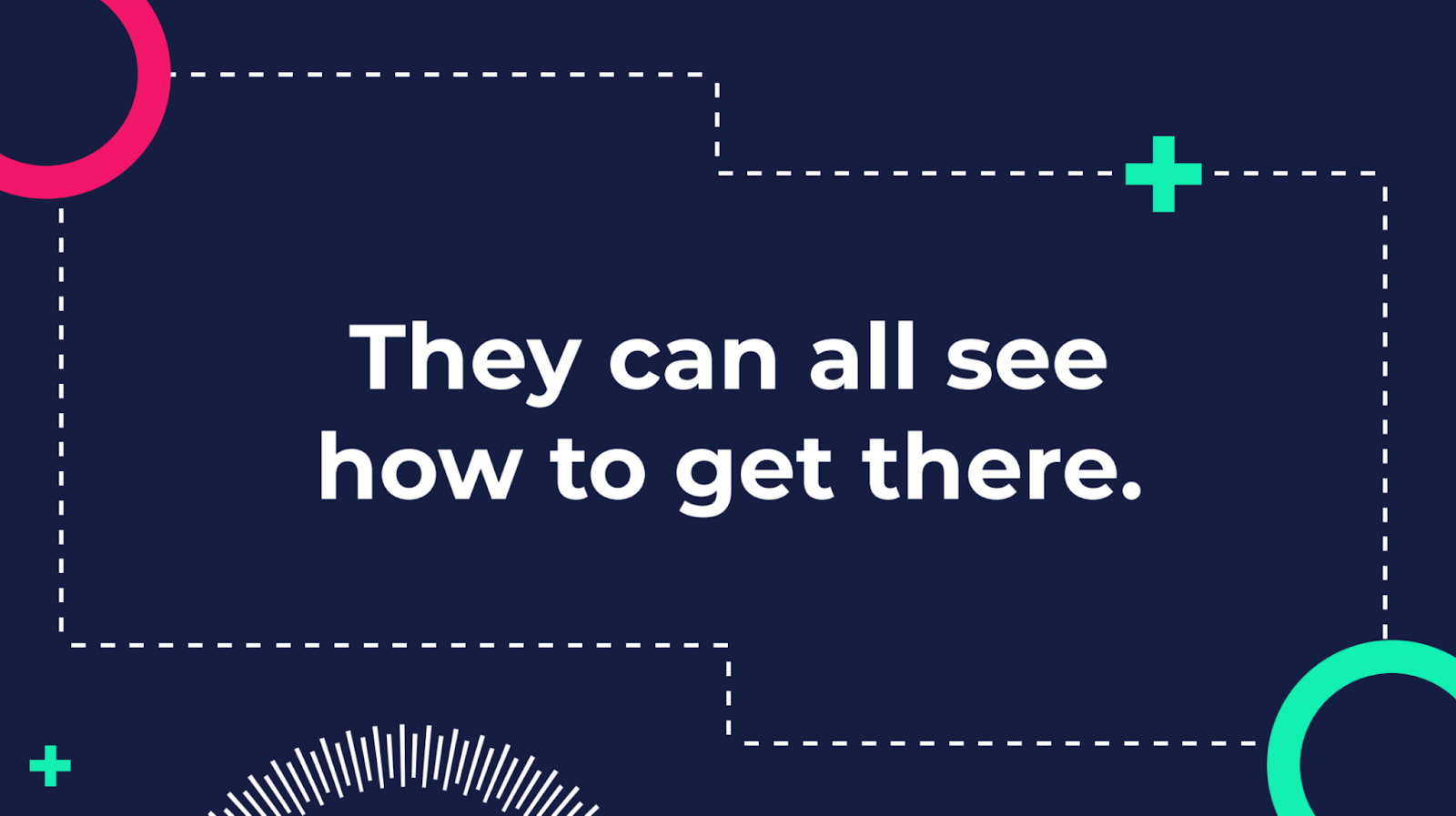
Pretty early on in my career, I had a conversation with my boss that really stuck in my memory.
Accountability vs. responsibility
I was getting hugely frustrated on a particular project because I believed we should be doing it one way, and the leadership of the organization had a very different view. My boss said to me:
"Sally, you need to understand the difference between accountability and responsibility. If you decide how to do something, you're accountable for the plan, the outcome, for everything about it. But if someone else is telling you how to do it then you're just responsible, you just need to do as you're being told, do as they say."
I stopped moaning, I delivered the project but that conversation stayed with me for years and I often think about it when I'm managing teams.
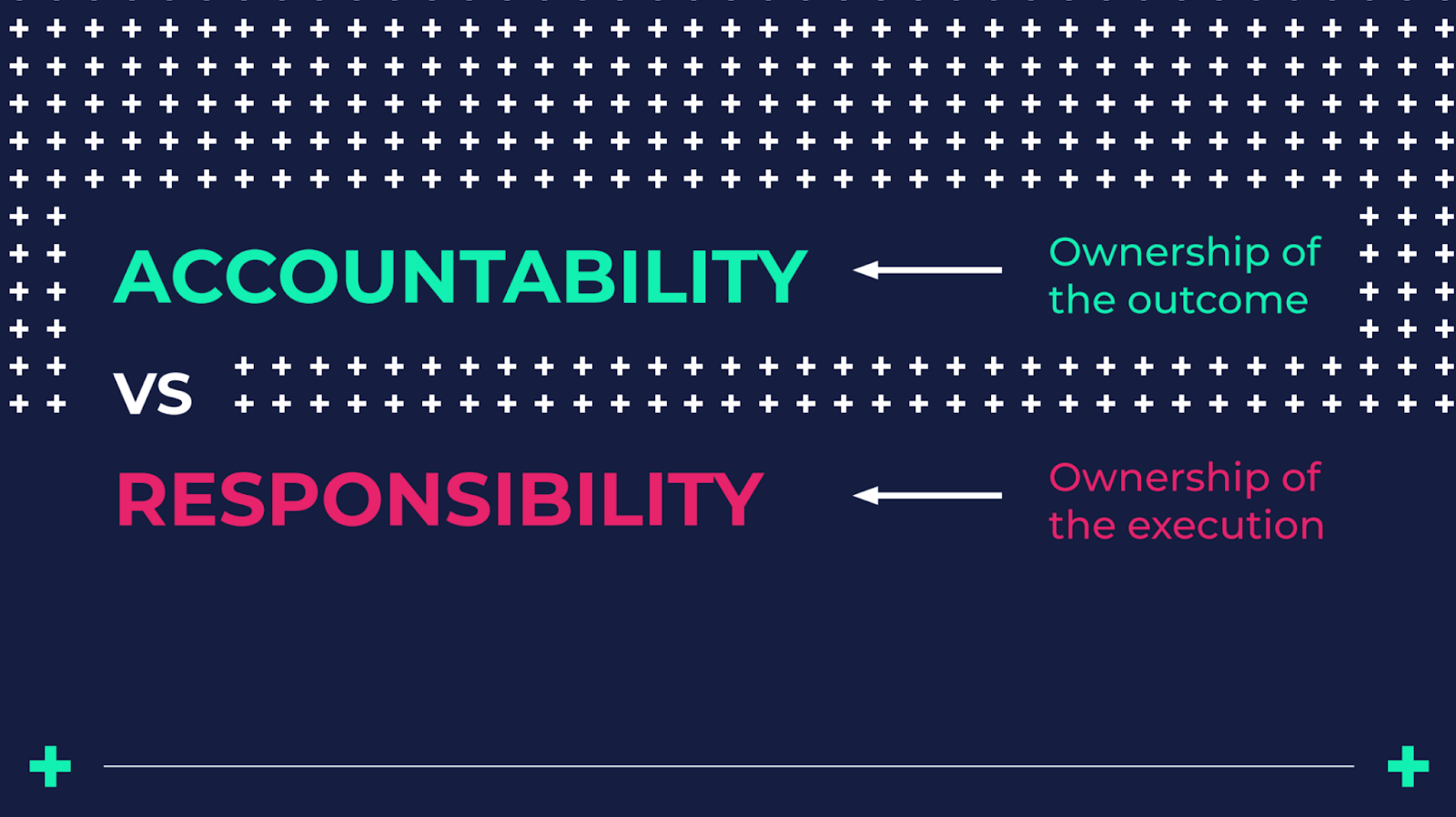
The really important distinction between accountability, which is ownership of the outcome, versus responsibility, which is ownership of the execution. For a team to succeed, they need to have accountability for the outcome.
But how do you find that balance? How do you create accountability within your teams, but at the same time, ensure that they do what you need them to do?
Objectives & key results
I've found OKRs to be a really powerful tool for doing that in a number of organizations that I've worked in. I'm not going to explain them here because I'm sure you've heard of them before but also, there's like a lot out there to read.
If you have done some reading about them, you'll know that actually, it's also quite easy to get them wrong and to actually achieve the opposite to what you are trying to achieve.
Have to be set by the team themselves
Teams who have accountability create their own OKRs.
At GoCompare, we the leadership team don't set the OKRs. What we do is create a series of what we call strategic pillars. Those are key things that we need to achieve based on the P&L and where we've said we'll be for the quarter or the year.
It might be something like increased conversion, and we might give a rate or a level on that. Then it's up to the teams to work out what the objectives are that will ladder up to deliver on that. They are working out the best way to achieve that and then the individual squads set the key results.
They set the levels that they believe that they can achieve.

Has to be a business or customer outcome
The second thing you need to make sure you get right about objectives and key results, and this is very important as a leader of the team, is making sure that your objective is a good objective.
To be a good objective it has to have a business or customer outcome.
Good vs bad objectives
An example of a bad objective would be something like launch social login or rollout this or that. Because what you get from that type of bad objective is a feature team, a team that are just focused on doing the thing, rather than on delivering an outcome.
A much better objective based on that example might be something like increase successful logins on mobile, and then you'd give a key result of by 50%, within a period of time, let's say a quarter.
These types of objectives, objectives based on a business outcome or customer problem, free the team up to work out what the best way is to solve the problem, rather than dictating a solution at them.
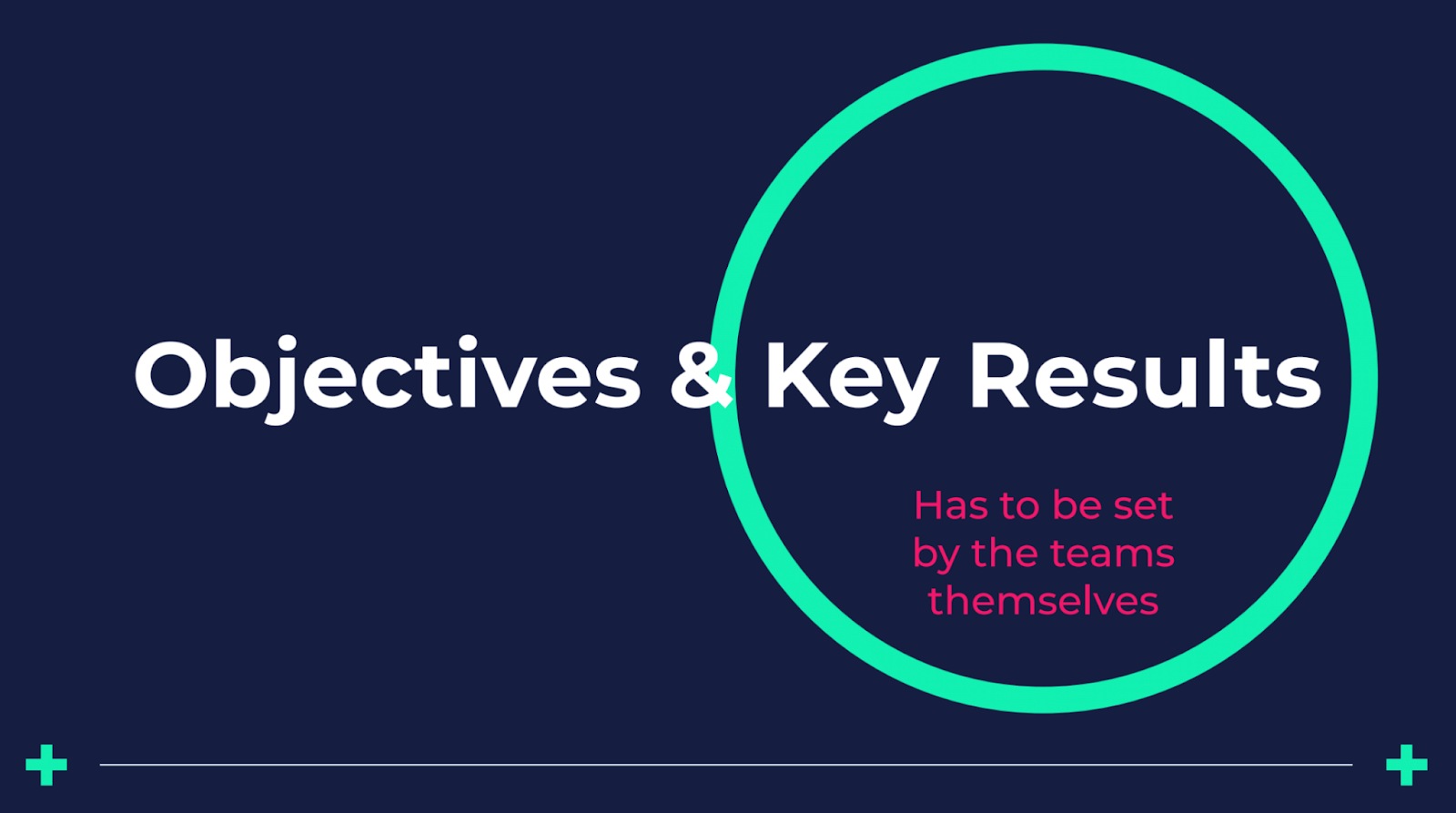
As a result of that, they own the outcome. That's really what you want for your business and for your customers is the outcome.
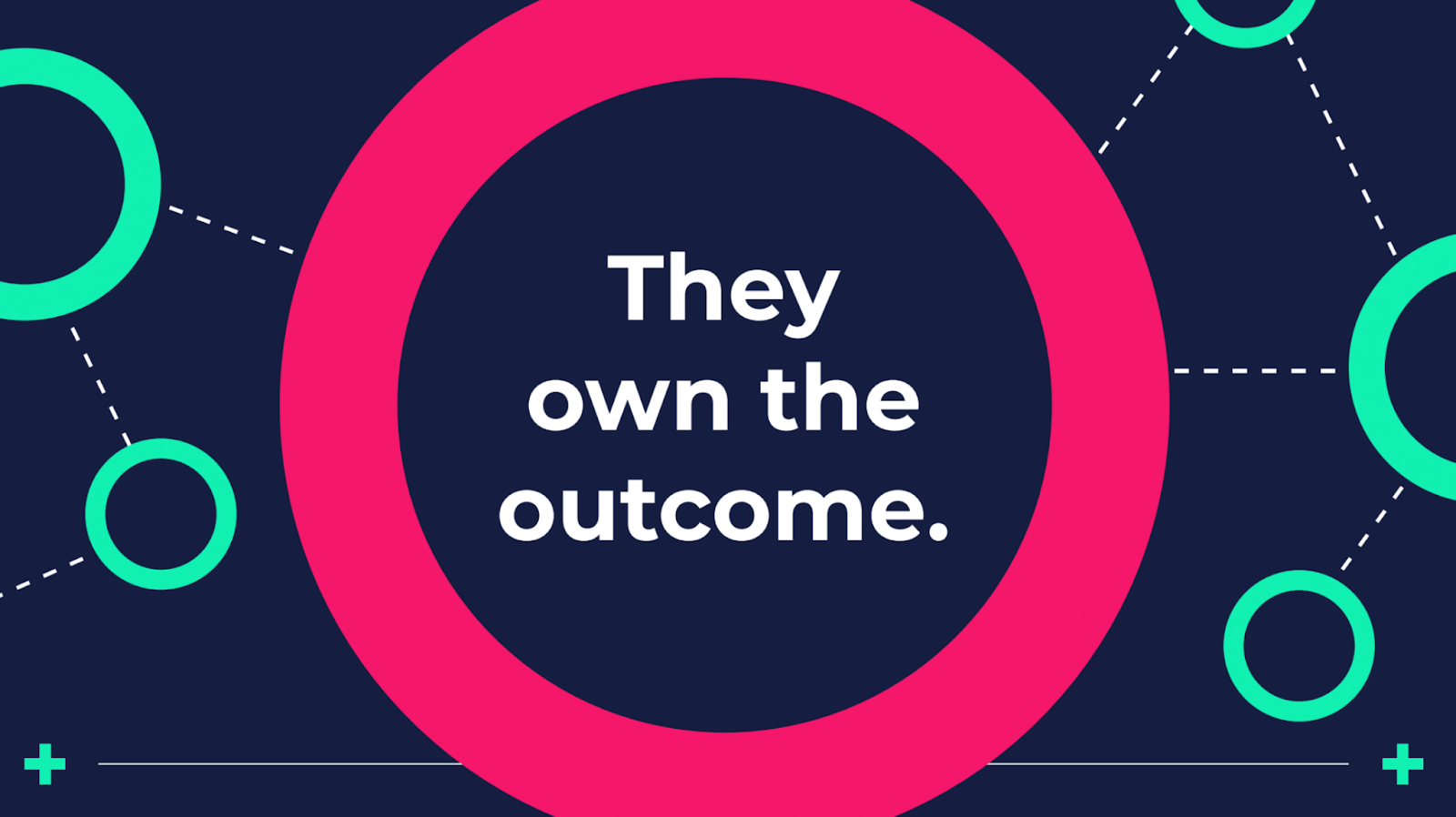
So we have a vision, we have a team who can see how to get there and the next thing that we need to be able to see through our magic goggles is that our teams are constantly focused on how well they are doing.
They focus on their own performance
That starts with living and breathing that objective, that OKR, that goal or whatever it is that you work with.
At my previous company, our CEO used to do this thing which we started calling the elevator test. What would happen is he'd get in the lift and whoever was in the lift with him, he would say to them, "What is your OKR? Where have you got to on it? And how confident are you at setting it?"
It led to a lot of people taking the stairs, but you get the point. It's this obsession with how well am I doing against the thing that I'm setting out to do.
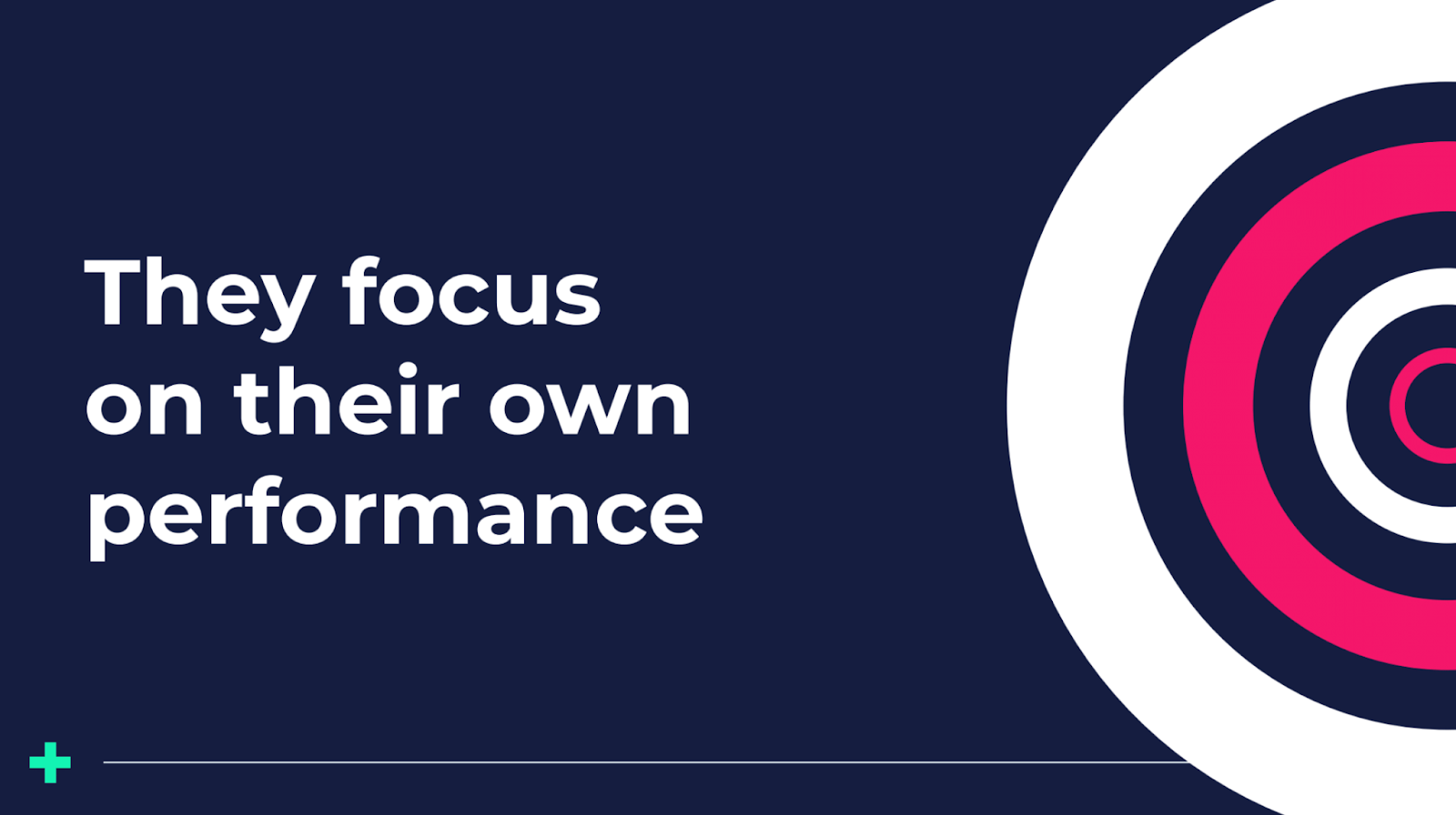
At GoCompare we do it a bit differently. We have fortnightly squad reviews, and what happens there is the teams, be those engineering and product teams or engineering and marketing teams or even just teams that are using our squad format, present the work that they've been doing.
And all of that work starts with a reminder of the objective they're trying to achieve, the key results of measuring that, and how well they're doing. In those good reviews, we expect them to tell us what's going wrong as much as they're telling us what's going right, and the things that they're worried about.
Because that's obviously the whole point is for us to be able to help and to make those teams successful. The teams who succeed don't just look at their outputs as a measure of their performance, they also look at the performance of the team themselves. They're worried about whether they are functioning well as a team.
At Photobox I got to work with two really great agile coaches called David Shrimpton and Dan Ashby, and you should go and look them up, they've both been working on some very interesting models that help teams to measure their maturity.
What they did at Photobox was worked with each of the individual squads using models that allow the teams to map their maturity against all sorts of different criteria like communication, collaboration, that type of thing.
The teams would review that and decide what they wanted to focus on. They would then work specifically on a particular area, and they would report back on that in their squad reviews as well.
The key thing here is that you can see your team's measuring their own performance, in addition to their outcomes.
So, you're looking at the same vision, we can see the steps on how to get there, you've got good visibility of the progress, the next thing you need to be able to see through your magic goggles is that your teams can adapt.
The ability to adapt
To do that, we're going to go way back in time to an era just after the dinosaurs, i.e. the pre-Uber era.
Zimride
In May 2017, these two guys Logan Green and John Zimmer founded a company that you might not have heard of called Zimride.
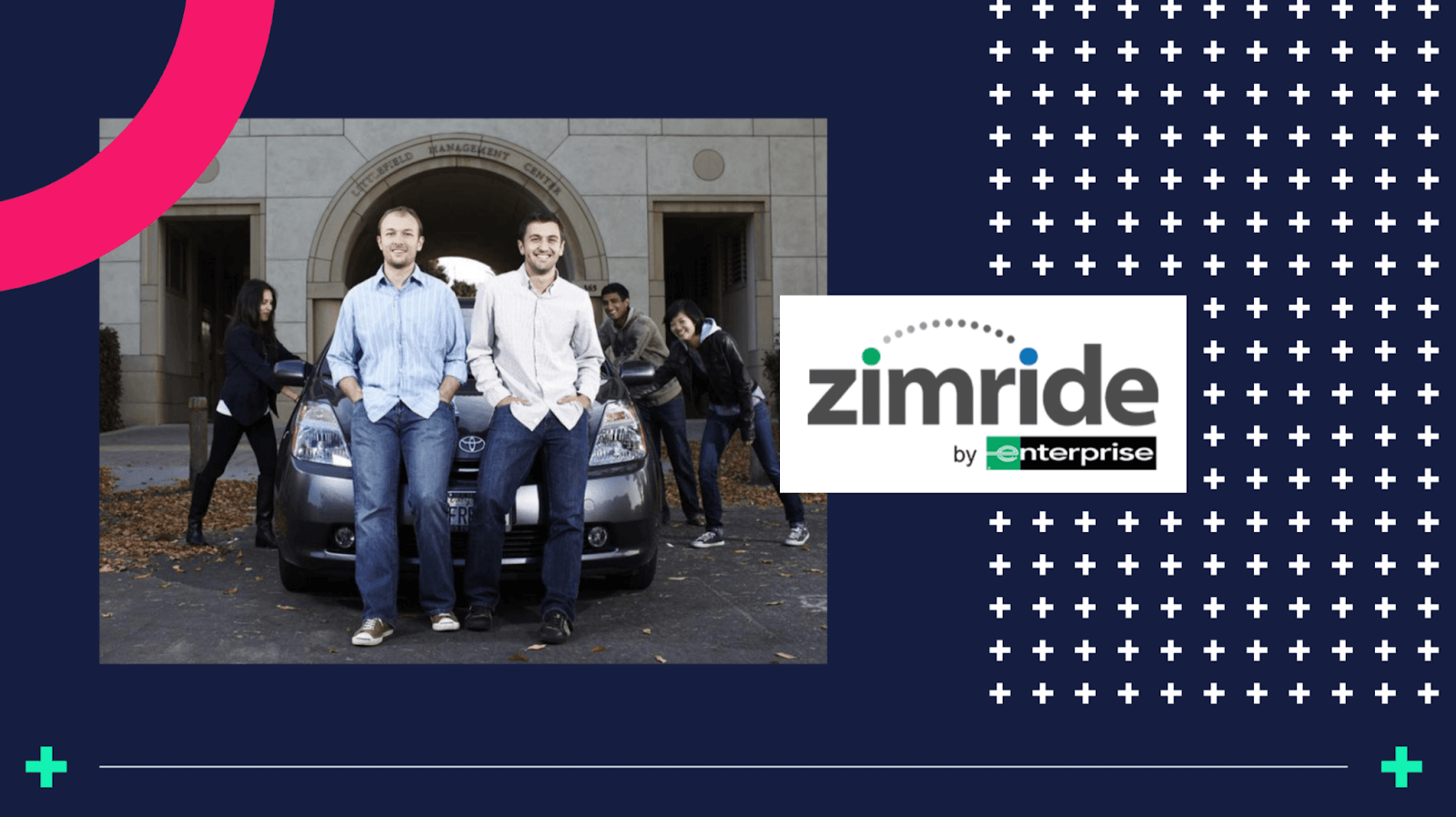
They had connected and bonded over their shared concerns about cities. Basically, they felt like cities were designed around cars that were parked in them, rather than the people that lived in them. They had this vision for future cities in which you didn't need to own a car, you could basically share cars, and massively change the way we lived in cities.
They really bonded over this and they developed this product called Zimride. It was a tool that was offered to universities and allowed them to do matchmaking between people who wanted a ride home for the weekend and people who had cars.
They were incredibly successful. They close several rounds, including a 6 million series A in 2011. And yet, in 2011, they also stopped completely, and they asked themselves how it was going, how well were they delivering against that original vision, and they also asked themselves, what would they do differently if they started again?
That was a really important question because between 2007 when they first launched and 2011, the smartphone had become ubiquitous and the world had changed considerably as a result.
Focused on that same vision of a different kind of city in which there's lower car ownership, they went back to the drawing board, and they came up with a totally revised concept. That concept was called Lyft, an app they built in six weeks which allowed a user to request a ride to anywhere from anywhere in someone else's car.
Just like what Uber copied not that long afterward because until then, Uber had been focused on the whole limo thing.
Lift IPO'd at $22.2 billion by the way.
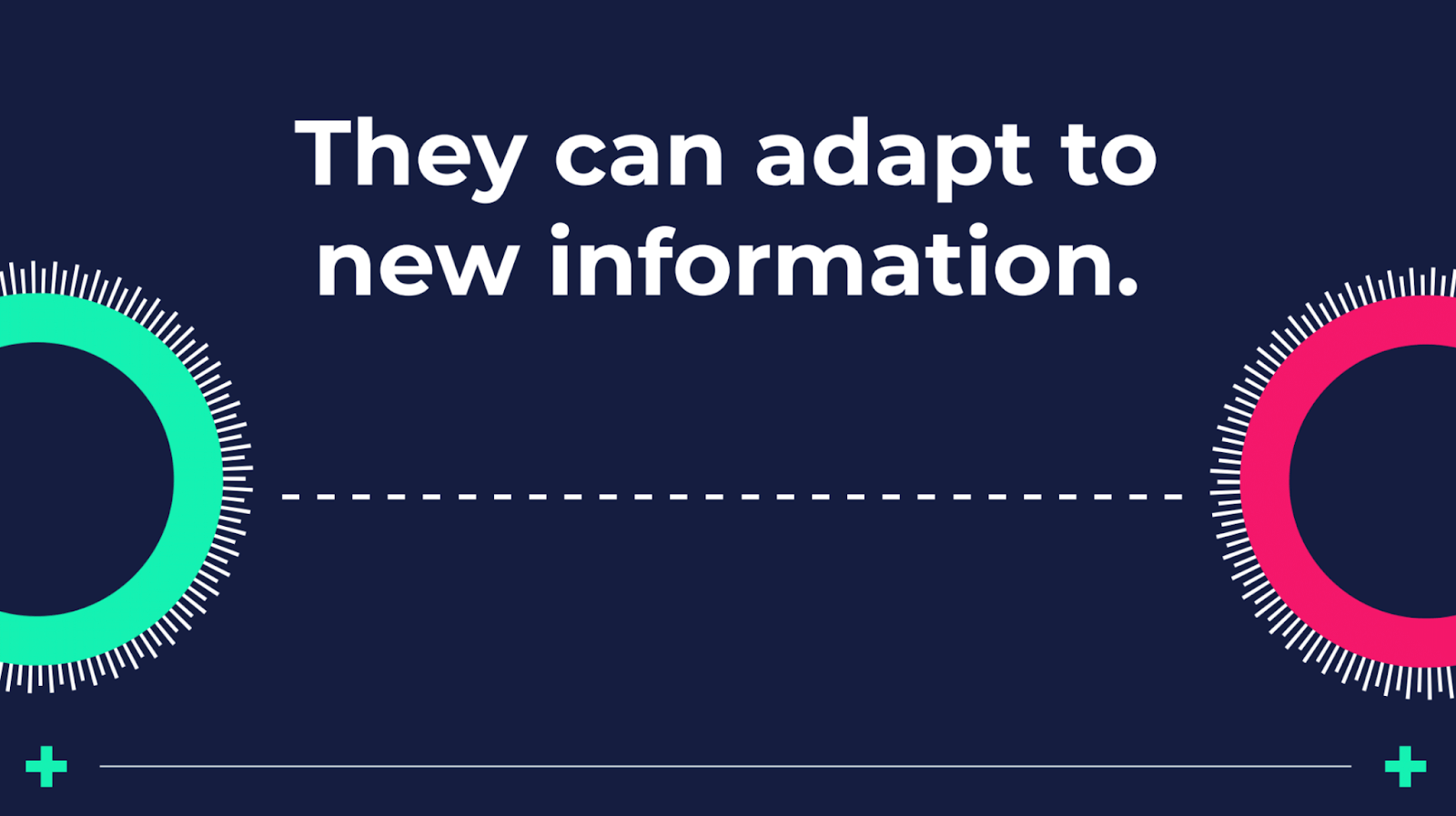
That's a signal of a successful team that you're looking for - that ability to adapt to information, to take it in, and to switch direction neatly.
The ability to stop
But also, that they had the ability to stop doing things. This is really critically important because it is very, very, very difficult for teams who have accountability, and who are passionately committed to delivering on their vision, to stop doing something, to acknowledge that it is no longer the right path, and to move on to something else.
That moment for Zimride was pretty massive, that big pivot, you don't get very many of those in a company or product life cycle.
How to spot
So how do we spot this type of thing on a day-to-day basis? What are the signs we should look for in our team?
Data-driven decisions
First of all, we should see that they are using data to make decisions. This is really important. The easiest way to tell this is just through the questions that you ask your team, because the way they should be responding to you when you ask them a question is not with opinion, or I think, or in my opinion, or perhaps.
It is you want to hear data as a response to your questions, or you want to hear a hypothesis that the team have that they are currently gathering data against.
Then you want them to question and validate that data.
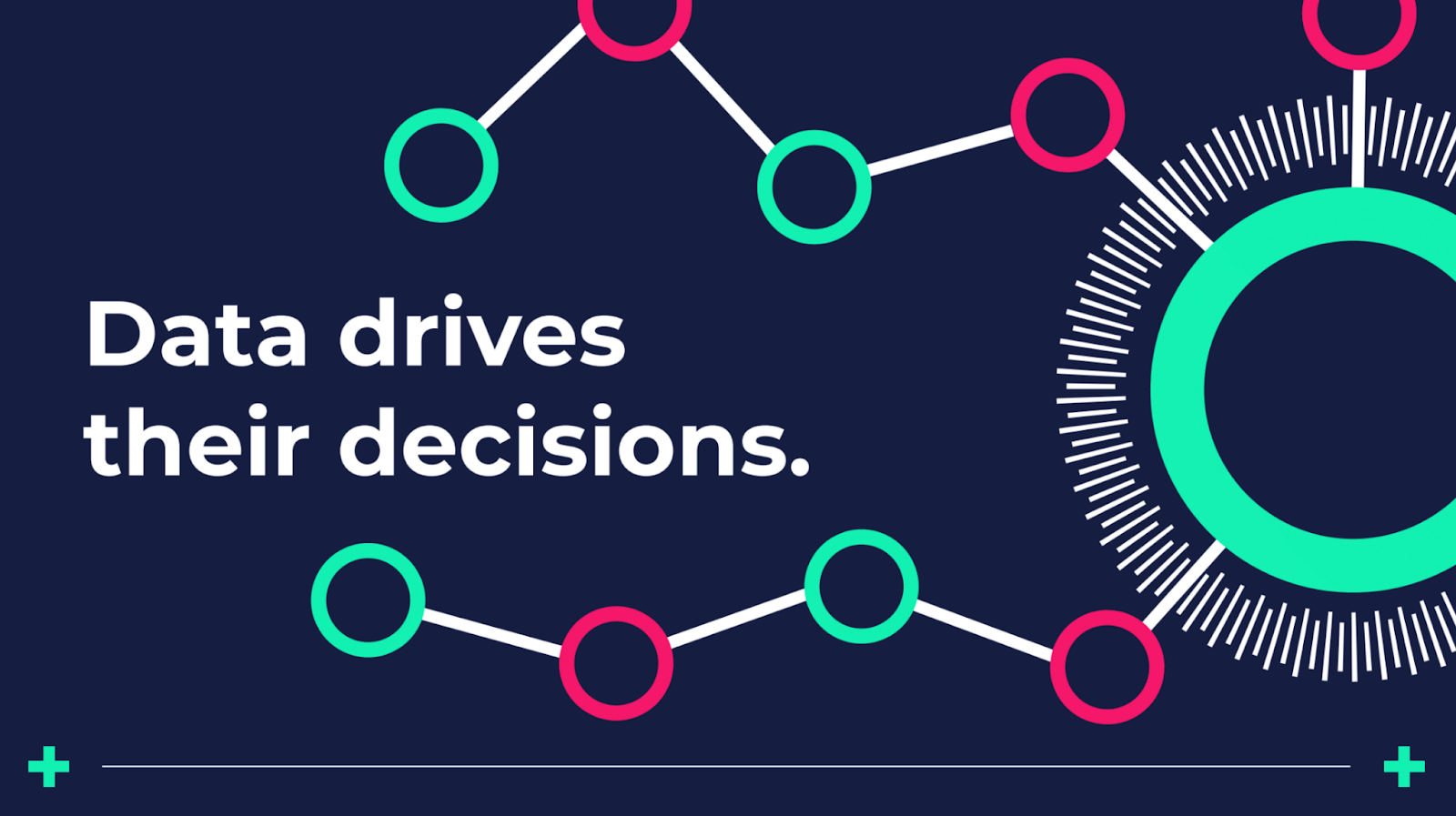
Example: GoCompare
A few weeks ago, we relaunched our home insurance journey and the results were really good, about a 25% increase in the number of people who were completing that journey within a couple of days. We were like whoa that's really good, right?
No, that is a bit too good. That's exactly what the team was suspicious about, because we had done some major improvements to the UX and made the UI nice and consistent, but there was no way that anything we had done was going to drive a 25% improvement or change in user behavior.
And so of course, they kept digging until they found the tagging problem.
As a leader of a team, it's your role to ensure that your teams have access to the information they need to make database decisions.
- Do they have customer research?
- Do they have market research?
- What tools provide them with data from your products?
Teams that use data to drive their decision-making succeed. Both because they use that data to reinforce the direction they're going in, and then also to adapt and change it when they need to.
Tackling difficult stuff
Sometimes there are enormous and complex problems between us and our vision. There might be industry-changing business models or complicated market fit. What you want to see through your goggles is that your teams are tackling these difficult problems.
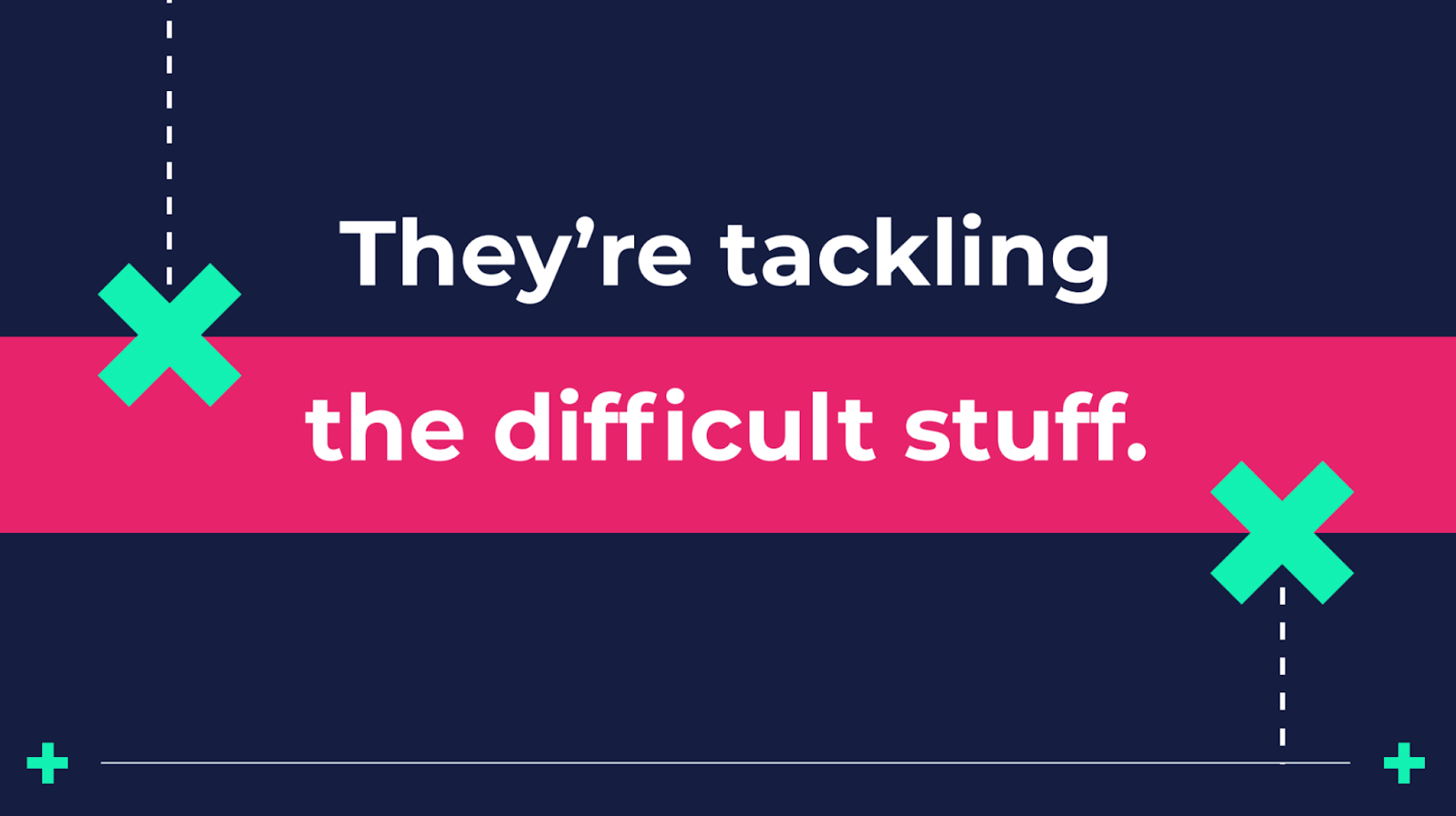
Example: FiveGuys
Here's an example from another business that you've probably heard about - FiveGuys.
It was founded in Arlington, Virginia by Jerry and Janie Merrill many years ago. In many ways, they were a proper lean startup before Lean Startup even started, because they had almost no capital. So they needed to be really frugal about how they did things.
But they had to choose somewhere to open their first restaurant and at that point, they were just thinking about one restaurant. They thought really hard about it because they had a lot of options, Arlington is pretty big, a lot of different places they could go.
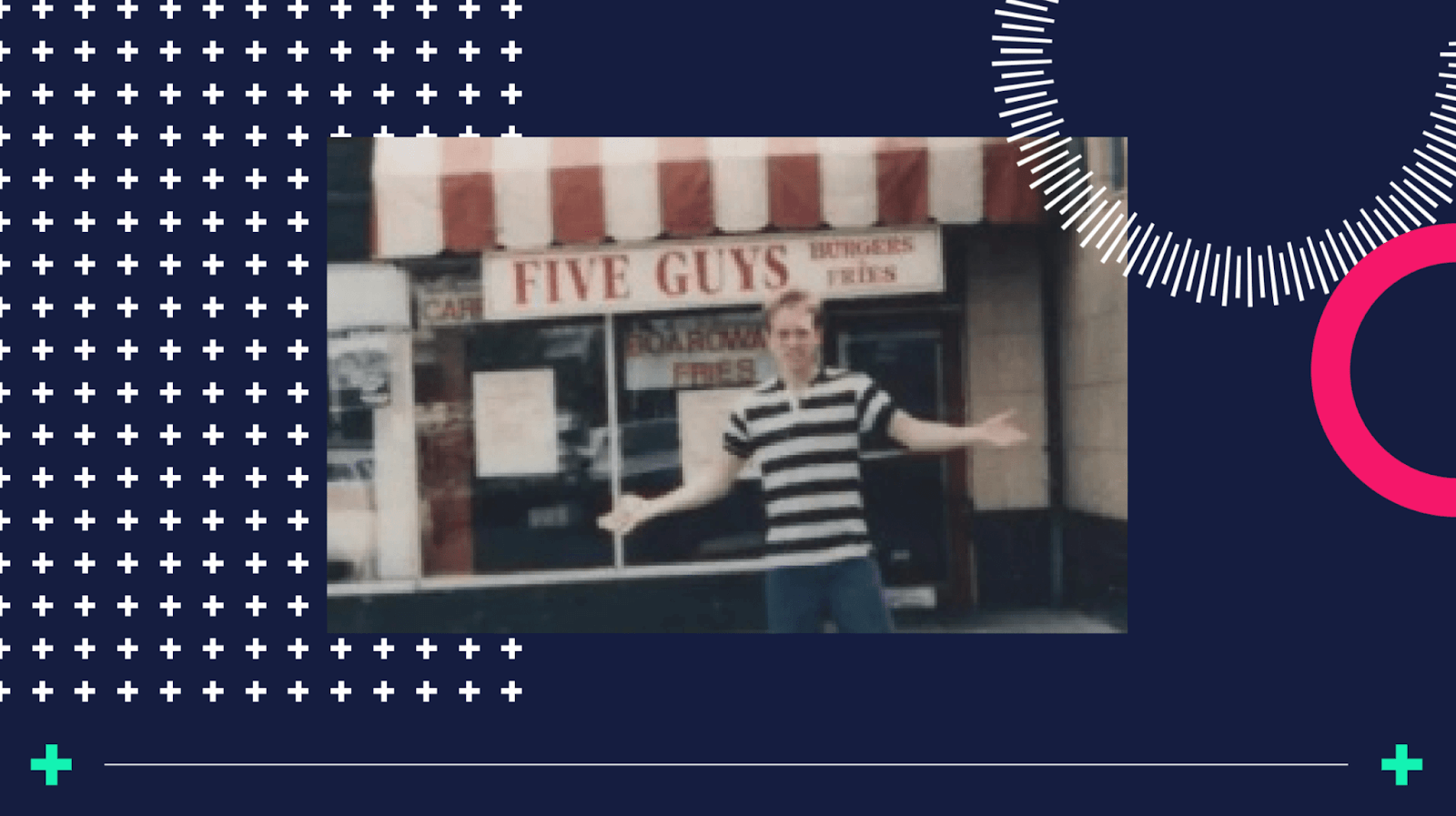
In the end, they settled on a location that was pretty much out of the way, it wasn't close to anywhere, there wasn't any passing footfall. The reason they did that was that they figured that if people made the effort to come to this location, found out about them, and came to this location to buy their burgers, then they were never going to fail because they would have succeeded in doing the hardest thing possible.
That was a really long time ago now but as I'm sure you know, there are now 3000 FiveGuys around the world. It's been an incredibly successful burger chain.
The thing that's interesting about that example is they designed the test to fail, they solved the hardest thing first.
Science lab space
To enable this, you as the leader have to create what I call a science lab space. In a science lab, you create experiments to learn, and you fully expect that the majority of those experiments are going to fail. Also in a science lab, you get to wear goggles, which is on-brand with this article.
But the key thing here is that if you learn to do something that's a success in itself, and if the next step is to learn, then we can't fail.

Premortem
Another thing that you and your teams can do in this area to help you tackle the hard stuff first is what's called a premortem.
That's before you start a project, you all get in a room if you can, or your get together and you think about a failed scenario in which the project hasn't succeeded, or the product hasn't succeeded.
You try and work out what are the things we would have done along the way that would mean that product has failed? Then you work back from there and you design your approach to the product or the project in a way that means you hopefully never get to that failed scenario.
They find ways around problems
I want to come back to Zimride again to tell you about the best indicator that your team is going to succeed. When they first launched, they were a whole new category of thing, there was no regulatory or legislative threat framework to govern private vehicles carrying passengers or charging for a ride in their car - it just didn't exist.
In America where they launched is obviously a pretty complex legislative environment, shall we say. But instead of being stopped or giving up what they did was they made payment voluntary for the first few years because that meant that it was legal, and they could get started.
They then worked for years, literally years, with local and national governments to get the legislation changed so that what they were doing would be possible.
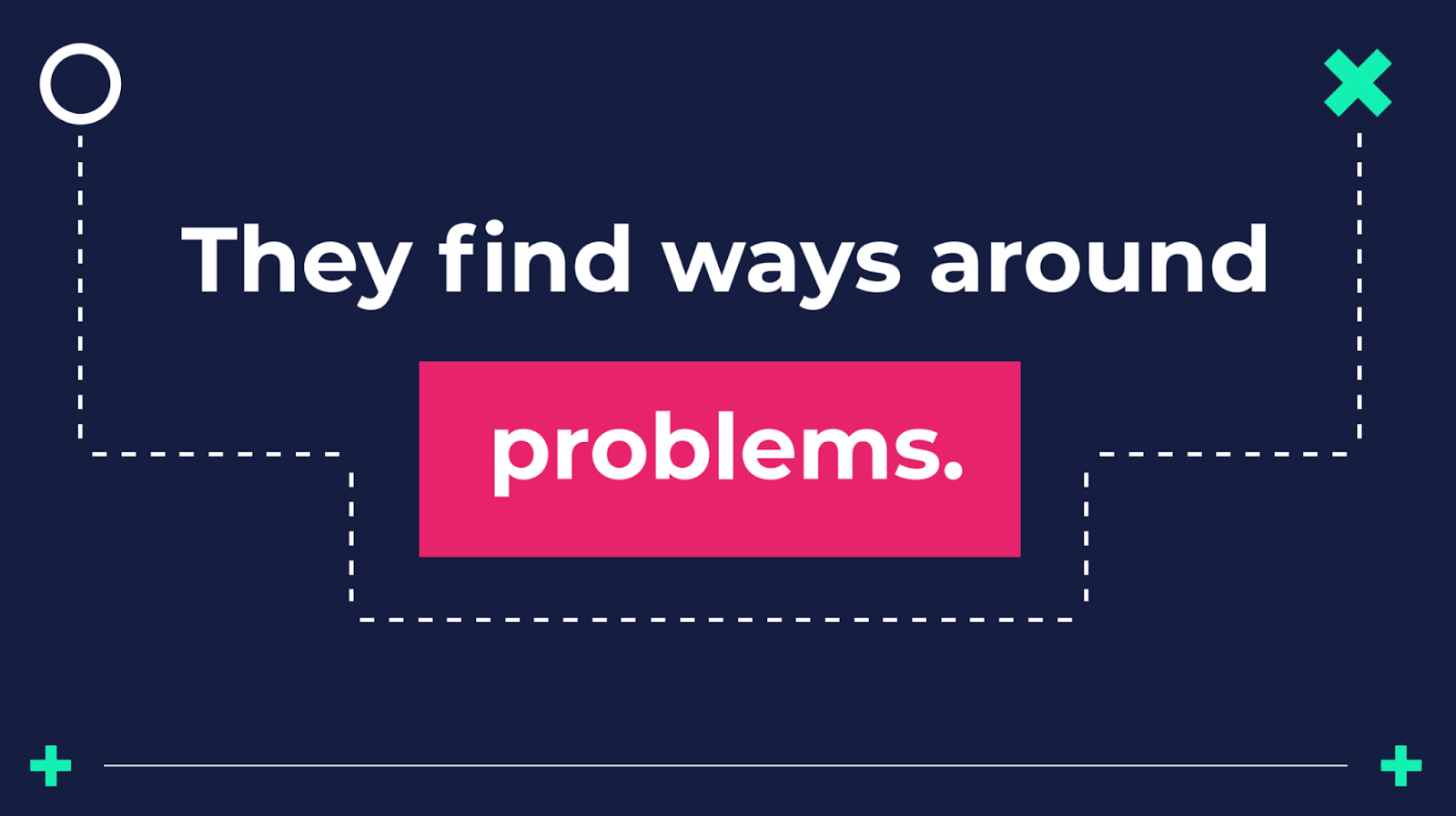
The main thing here is that they found a way to take a step forward.
Finding a way forward
I call that finding a way forward. It's my number one mantra, and it's my number one signal of team health - do you see people encountering problems and then finding out different ways to take steps around those problems?
Anyone I've worked with will tell you I go on about this all the time, finding a way forward, taking a step, learning something new, and keeping going.
They have you
Finally, the real secret, the true magic of the goggles is that if you want your team to deliver, if you want them to really succeed, the thing you need to look at, to understand whether they are going to win or lose is you.
Example: Royal Mint
To illustrate that, I want to tell you one last story, a story about how poor leadership wasted a tonne of money and also created a tonne of money and also resulted in a very strange little piece of pub quiz trivia, which is that Prince George and Princess Charlotte have both got one of these commemorative christening coins, whereas Prince Louis hasn't got one and will never have one.

That's because Princess Charlotte was never supposed to have one. If you're a little bit intrigued now, let me tell you the story.
In 2015, there was something very big going on at the Royal Mint and that was they were changing the portrait of the Queen on the coins. This only ever happened four times before in the history of the Queen's reign, so something that happened every 20 years.
The illustration for the new one was being done by someone internally. There was a lot of excitement, I'm not exaggerating, or being sarcastic when I say it was a massive deal for the Royal Mint.
What they decided to do is produce a commemorative range of coins - this is one of the big ways in which the Royal Mint makes its money. It was going to be a very high pressurised project, it would usually take about two years to do something like this, but they had four months.
The product team went away, they did a tonne of research, they looked at feasibility, etc. came back and said, "Here's the range we should do, and here's how many we should produce".
The leadership team looked at this proposal and decided it wasn't good enough. These leaders said they thought the product team who'd come up with this proposal were really underestimating how much excitement there was going to be over the change in the portrait from four to five years, really.
The leadership team overrode everything that the team had done, massively increased the product, changed the scale of the commemorative range, and massively increased the volumes that were going to be manufactured.
The outcome?
You know where this is going because three weeks later into launch, it was clear the sales weren't going to go anywhere near what they expected. They were left with this massive multi million pound hole in their budget and their forecast.
Plus a huge amount of stock on the shelves, which obviously later had to get scrapped at more cost to the business.
What to do?
Well, at this point, the team leadership decided to plug the hole in the financial plan by releasing another new coin range, this time, with a two month turnaround to celebrate the conveniently timed christening of darling Princess Charlotte.
The number one reason why your team will succeed or fail is because they have you.

Next time you pick up a coin, and you see that portrait of the queen, stop for a minute. Remember that story and ask yourself, how am I leading my team today?
Because if your team can see the vision, they have a plan to get there, they're measuring themself, they're using data to make decisions, they're adapting to that information, they're finding ways forward, and you are still telling them what to do, the magic goggles are not going to help you because what you need is magic ears and that is another whole talk.
Thank you.



 Follow us on LinkedIn
Follow us on LinkedIn



